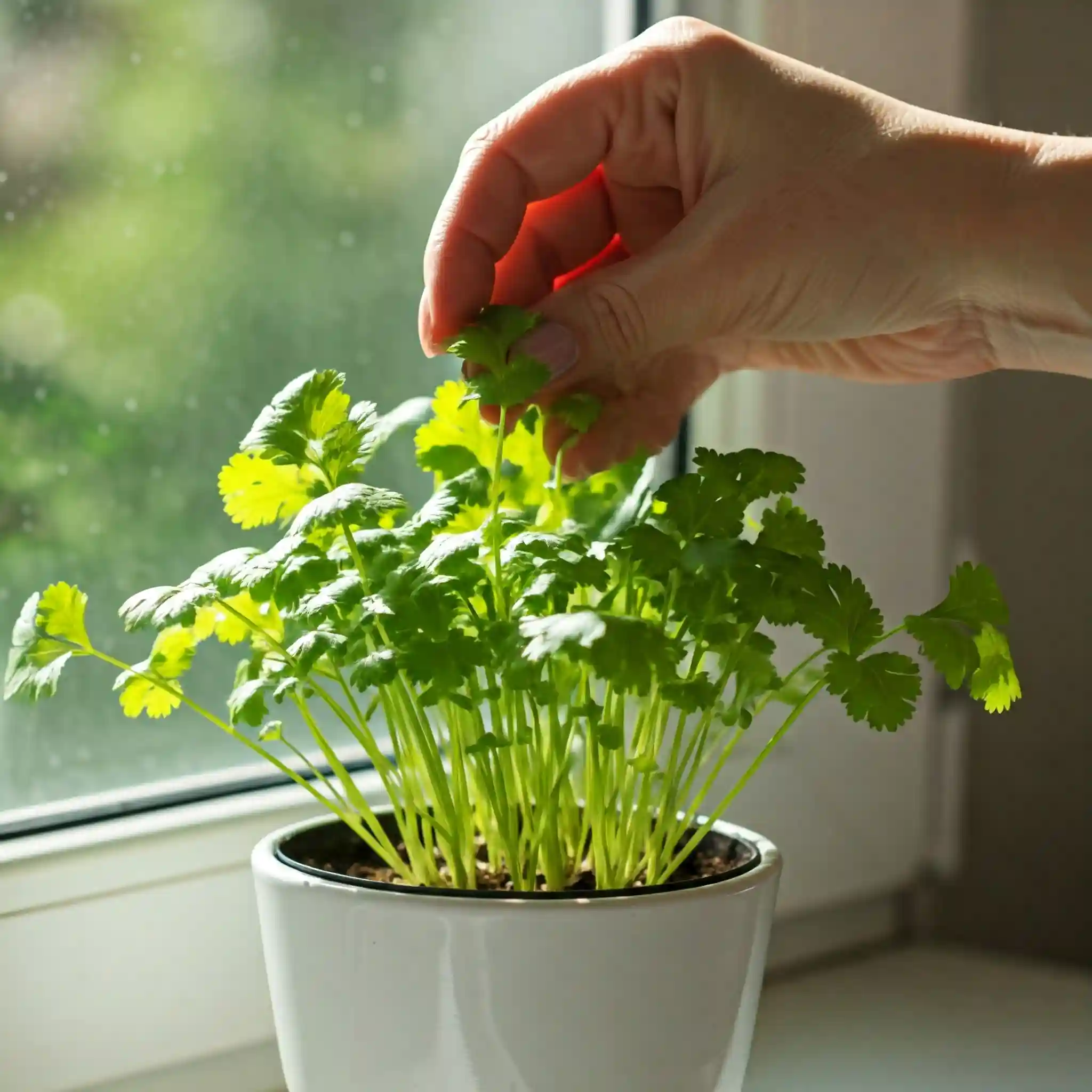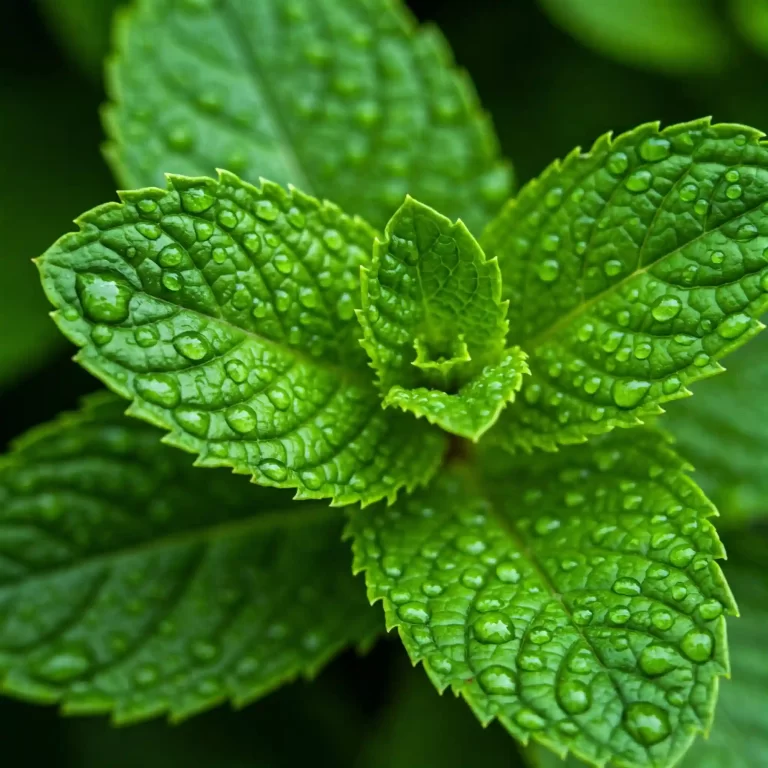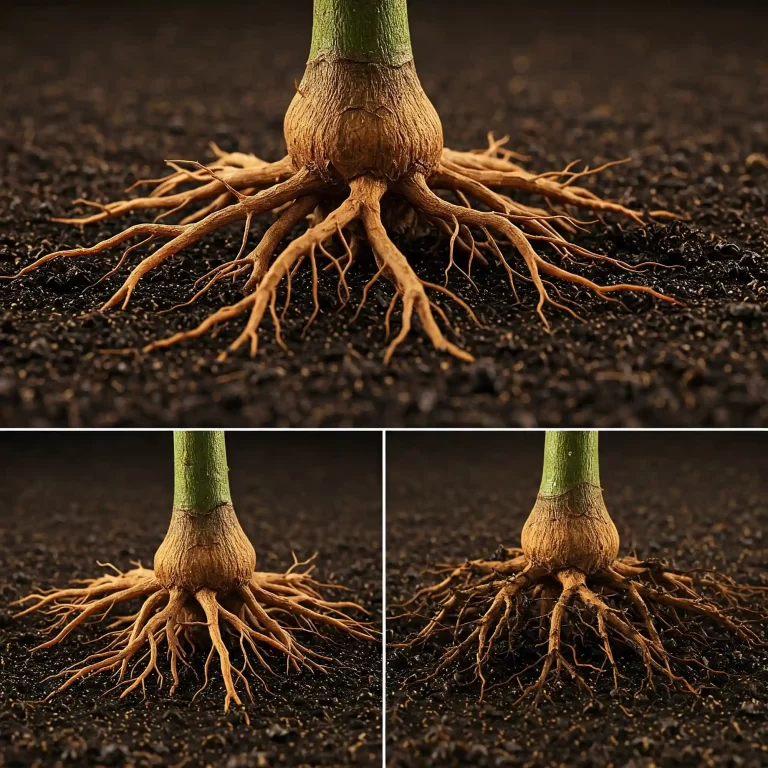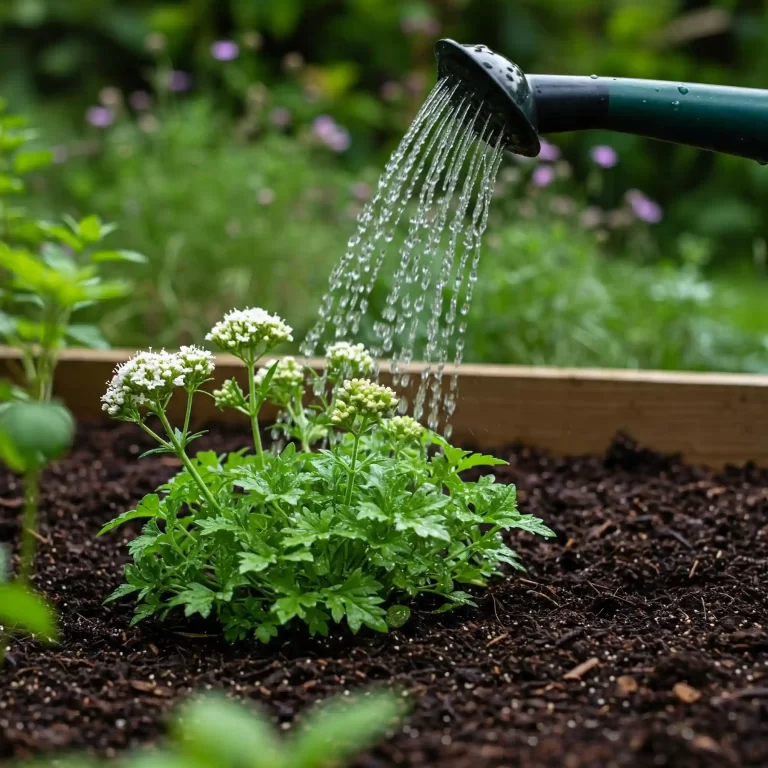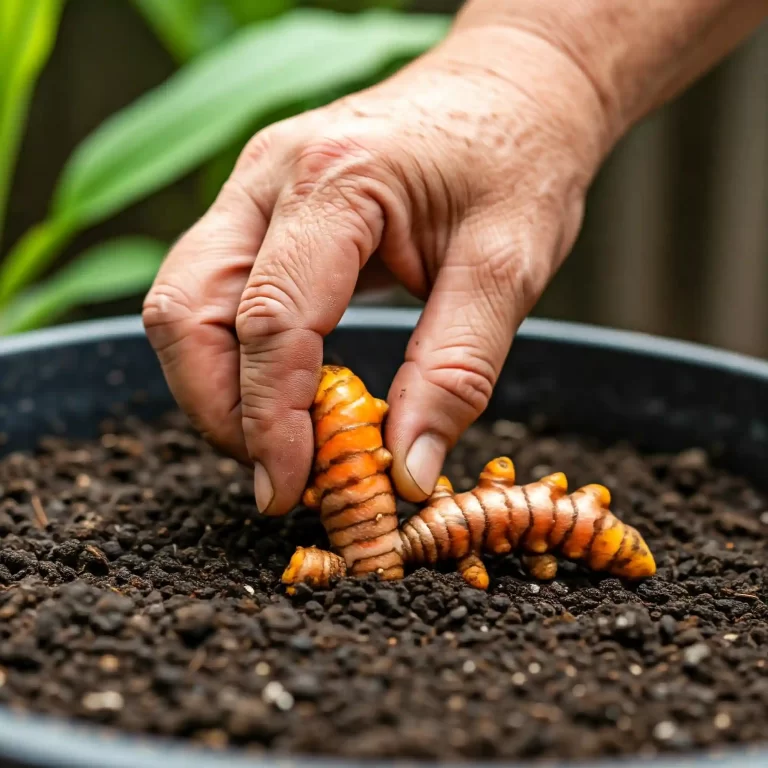Have you ever bought a bunch of cilantro from the grocery store, only to find it wilted and slimy in your fridge a few days later? It’s a common frustration for many home cooks, including myself. That vibrant green herb, so crucial for adding a fresh zest to our favorite dishes, seems to have a tragically short shelf life.
This is a problem many gardeners face, especially those of you looking to add fresh herbs to your meals without constantly running to the store. You want fresh, flavorful cilantro at your fingertips, ready to enhance your culinary creations. The disappointment of finding wilted cilantro can be incredibly frustrating and leave you feeling helpless.
Growing your own cilantro at home is the answer! This guide will walk you through, step by step, how to grow cilantro herbs successfully, ensuring a constant supply of fresh, aromatic herbs right from your garden or even your windowsill. You’ll learn everything from seed starting to harvesting, and even how to prevent common problems like bolting. By the end of this article, you’ll be well-equipped to cultivate your own thriving cilantro patch, saving you money and adding a burst of fresh flavor to your meals.
Understanding Cilantro
Let’s dive a little deeper into the plant we’re about to cultivate. Cilantro, scientifically known as Coriandrum sativum, is a member of the parsley family. It’s an annual herb, meaning it completes its life cycle in a single year. This also means you will have to replant it each year. This is a crucial detail for you to keep in mind as you plan your garden. It is primarily grown for its fragrant leaves, which are widely used in cuisines around the world. However, it’s important to note that cilantro is actually the leaf of the plant, while coriander refers to the dried seeds. So, when you’re buying spices, you’re buying coriander, but when you’re looking for fresh herbs, you’re looking for cilantro. It’s the same plant, just at different stages of its life cycle.
I’ve often heard people say they either love or hate cilantro. This is due to a genetic variation that affects how people perceive the aldehydes in cilantro, which are organic compounds that give cilantro its characteristic aroma. Some people perceive these aldehydes as pleasant and citrusy, while others find them soapy or even unpleasant. If you’re one of the lucky ones who enjoys the taste, you’re in for a treat!
Now, why should you consider growing your own cilantro when you can easily buy it at the store? There are several compelling reasons. As I mentioned earlier, the taste of fresh, homegrown cilantro is unparalleled. The flavor is much more intense and vibrant compared to store-bought cilantro, which often loses its aroma and freshness during transportation and storage. You will notice a significant difference in the flavor profile when you use freshly picked cilantro in your dishes.
Another significant advantage is cost-effectiveness. A small packet of cilantro seeds is relatively inexpensive and can yield many plants, providing you with a continuous supply of fresh herbs throughout the growing season. This can save you a considerable amount of money in the long run, especially if you use cilantro frequently in your cooking. I’ve found that growing my own herbs has significantly reduced my grocery bill, and cilantro is one of the easiest and most rewarding herbs to grow.
Furthermore, growing your own cilantro gives you complete control over the growing process. You can choose to grow it organically, avoiding the use of synthetic pesticides and fertilizers. This is not only better for your health but also for the environment. You can also ensure that your cilantro is grown in the best possible conditions, resulting in healthier and more flavorful plants. This is something you simply can’t control when you buy cilantro from the store. You’re relying on the farming practices of others, which may not align with your values or preferences.
Cilantro is a versatile herb used in a wide range of cuisines, including Mexican, Indian, and Southeast Asian. It’s a key ingredient in dishes like salsa, guacamole, curries, and stir-fries. Having a fresh supply of cilantro on hand can elevate your cooking to a whole new level, allowing you to experiment with different flavors and create authentic dishes from around the world. I’ve personally used my homegrown cilantro to make everything from fresh salsas to flavorful curries, and the difference in taste is always remarkable.
How to Grow Cilantro from Seed
Growing cilantro from seed is a straightforward process, and it’s a great way to start your own herb garden. Whether you prefer to start your seeds indoors or sow them directly into your garden, there are a few key things to keep in mind. I’ve tried both methods over the years, and I’ve found that each has its own advantages, depending on your climate and growing conditions.
A. Starting Seeds Indoors:
Starting cilantro seeds indoors is a good option if you live in an area with a short growing season or if you want to get a head start on your garden. I often recommend this method to those of you who live in colder climates, as it allows you to start growing your cilantro even before the last frost has passed. Here’s how to do it:
- Best time to start seeds indoors: I recommend starting your cilantro seeds indoors about 4-6 weeks before the last expected frost in your area. This will give the seedlings enough time to develop a strong root system before they are transplanted into the garden. You can find the average last frost date for your area by checking online resources or contacting your local agricultural extension office.
- Choosing the right containers and potting mix: When starting seeds indoors, it’s important to use small containers with drainage holes. I prefer to use peat pots or small plastic containers, as they are readily available and inexpensive. You can also use recycled containers, such as yogurt cups or plastic food containers, as long as you make sure they are clean and have drainage holes. Use a high-quality potting mix that is light and well-draining. Avoid using garden soil, as it can be too heavy and may contain pathogens that can harm your seedlings.
- Sowing seeds: Cilantro seeds should be sown about ¼ inch deep and spaced about 1 inch apart. You can sow several seeds in each container and then thin them out later, keeping only the strongest seedlings. I like to gently press the seeds into the potting mix and then cover them with a thin layer of vermiculite or more potting mix.
- Maintaining moisture and temperature for germination: Cilantro seeds need consistent moisture to germinate. I recommend using a spray bottle to mist the soil regularly, keeping it moist but not soggy. You can also cover the containers with a plastic lid or plastic wrap to help retain moisture. The ideal temperature for germination is between 65-70°F (18-21°C). You can place the containers in a warm location, such as on top of a refrigerator or near a heat vent, to help maintain this temperature.
- Germination time: Cilantro seeds typically germinate within 7-10 days. Once the seedlings emerge, remove the plastic covering and place the containers in a sunny location, such as a south-facing window. Make sure the seedlings receive at least 6 hours of sunlight per day. If you don’t have a sunny window, you can use grow lights to provide supplemental lighting.
B. Direct Sowing Outdoors:
Direct sowing cilantro seeds into the garden is a simpler method, especially if you live in an area with a long growing season. I often use this method myself, as it eliminates the need for transplanting, which can sometimes stress the seedlings. Here’s how to do it:
- Best time to direct sow: The best time to direct sow cilantro seeds is after the last frost in your area. The soil temperature should be at least 50°F (10°C) for optimal germination. You can check the soil temperature using a soil thermometer.
- Preparing the garden bed: Choose a location in your garden that receives full sun to partial shade. Cilantro prefers well-draining soil that is rich in organic matter. You can amend the soil with compost or other organic matter to improve its fertility and drainage. I also recommend loosening the soil to a depth of about 6 inches to create a loose and friable seedbed.
- Sowing seeds: Sow the cilantro seeds about ¼ inch deep and space them about 2-3 inches apart. You can sow the seeds in rows or broadcast them over a wider area. Gently press the seeds into the soil and cover them with a thin layer of soil.
- Thinning seedlings: Once the seedlings emerge, thin them out to about 6-8 inches apart. This will give them enough room to grow and prevent overcrowding. You can use small scissors or your fingers to carefully remove the extra seedlings.
I’ve found that both methods can be successful, but direct sowing is often easier and more efficient, especially for those of you who are new to gardening. However, if you want to get a head start on your garden or if you live in a colder climate, starting seeds indoors is a great option.
How to Plant Cilantro Seedlings
So, you’ve nurtured your cilantro seedlings indoors, or perhaps you’ve purchased some healthy starts from a local nursery. Now it’s time to get them into their permanent home in your garden. This process, known as transplanting, requires a bit of care to minimize stress on the young plants. I’ve learned over the years that gentle handling and proper timing are key to successful transplanting. Here’s how you can ensure your cilantro seedlings thrive after transplanting:
- Transplanting seedlings (when and how): The ideal time to transplant your cilantro seedlings is when they have developed a few sets of true leaves. This usually occurs about 4-6 weeks after sowing the seeds. You’ll notice the initial “seed leaves” (cotyledons) will be followed by leaves that look more like mature cilantro foliage. This is your cue! Choose a cloudy day or late afternoon to transplant, as this will help reduce stress on the seedlings from direct sunlight.
To transplant, gently loosen the soil around the seedlings in their containers. If you’re using peat pots, you can plant the entire pot directly into the ground, as the peat will decompose over time. If you’re using plastic containers, carefully remove the seedlings by gently squeezing the bottom of the container and easing the root ball out. Try to disturb the roots as little as possible. I find that using a small trowel or spoon can help with this process. - Choosing the right location (sunlight, soil): Cilantro thrives in a location that receives full sun to partial shade. In hotter climates, providing some afternoon shade can help prevent bolting (premature flowering). The soil should be well-draining and rich in organic matter. Before transplanting, prepare the garden bed by loosening the soil and amending it with compost or other organic matter. This will provide the seedlings with a nutrient-rich environment to grow in. You can also perform a soil test to check the pH. Cilantro prefers a slightly acidic to neutral pH (between 6.0 and 7.0).
- Spacing plants: Proper spacing is crucial for healthy cilantro growth. Space the seedlings about 6-8 inches apart to allow for adequate air circulation and prevent overcrowding. Overcrowding can lead to fungal diseases and other problems. I like to visualize the mature size of the plant when spacing them out. This helps ensure they have enough room to grow and won’t compete for resources.
- Watering after transplanting: After transplanting, water the seedlings thoroughly to help them settle into their new home. I recommend watering at the base of the plants to avoid wetting the foliage, which can encourage fungal diseases. Keep the soil consistently moist but not soggy. Mulching around the base of the plants with straw or other organic mulch can help retain moisture and suppress weeds.
I’ve found that paying close attention to these details during transplanting can make a significant difference in the success of your cilantro crop. By providing the seedlings with the right conditions and handling them with care, you can ensure they get off to a strong start and provide you with a bountiful harvest of fresh herbs.
Cilantro Care Tips
Once your cilantro seedlings are happily settled in their garden bed or containers, it’s time to focus on ongoing care. While cilantro is relatively easy to grow, there are a few key things to keep in mind to ensure a healthy and productive harvest. I’ve learned through experience that consistent care is crucial for preventing common problems like bolting and ensuring a continuous supply of fresh herbs.
A. Watering:
Proper watering is essential for cilantro growth. Cilantro prefers consistently moist soil, but it’s important to avoid overwatering, which can lead to root rot. I’ve found that the best approach is to water deeply and regularly, allowing the soil to dry out slightly between waterings. This encourages deep root growth and helps the plants become more drought-tolerant.
- How often to water cilantro: The frequency of watering will depend on several factors, including the weather, soil type, and whether you’re growing cilantro in the ground or in containers. In general, I recommend watering every 2-3 days during warm weather and less frequently during cooler periods. You can check the soil moisture by inserting your finger about an inch into the soil. If it feels dry, it’s time to water.
- Avoiding overwatering and root rot: Overwatering is a common problem that can lead to root rot, a fungal disease that can kill your cilantro plants. To avoid this, make sure your soil is well-draining and that your containers have drainage holes. When watering, water at the base of the plants to avoid wetting the foliage, which can also encourage fungal diseases.
B. Sunlight:
Cilantro thrives in full sun to partial shade. In cooler climates, full sun is ideal, but in hotter climates, providing some afternoon shade can help prevent bolting. I’ve noticed that cilantro grown in partial shade tends to have a longer growing season, as it’s less stressed by the heat.
- Ideal sunlight conditions for cilantro: Aim for at least 6 hours of sunlight per day. If you’re growing cilantro indoors, place it in a south-facing window or use grow lights to provide supplemental lighting.
C. Soil and Fertilizing:
Cilantro prefers well-draining soil that is rich in organic matter. Amending the soil with compost or other organic matter before planting can help improve its fertility and drainage. I also recommend adding a slow-release organic fertilizer at planting time to provide the plants with a steady supply of nutrients.
- Best soil type for cilantro: A slightly acidic to neutral pH (between 6.0 and 7.0) is ideal for cilantro. You can perform a soil test to check the pH and amend the soil if necessary.
- Fertilizing: While cilantro doesn’t require heavy fertilization, a light feeding with a balanced organic fertilizer every few weeks can help promote healthy growth. Avoid using high-nitrogen fertilizers, as they can encourage excessive leaf growth at the expense of flavor.
D. Preventing Bolting (Flowering):
Bolting, or premature flowering, is a common problem with cilantro, especially in hot weather. Once cilantro bolts, it stops producing leaves and focuses on seed production. While you can harvest the seeds (coriander), you’ll lose the fresh cilantro flavor. I’ve found that there are several strategies you can use to prevent bolting:
- Why cilantro bolts: Bolting is triggered by stress, such as heat, drought, or long days.
- Tips for preventing bolting:
- Consistent watering: Keep the soil consistently moist, especially during hot weather.
- Shade during hot weather: Provide some afternoon shade to protect the plants from the intense sun.
- Succession planting: Plant new cilantro seeds every few weeks to ensure a continuous supply of fresh herbs.
- Choose bolt-resistant varieties: Some cilantro varieties are more resistant to bolting than others.
By following these care tips, you can ensure a healthy and productive cilantro crop, providing you with a continuous supply of fresh herbs for your culinary creations.
Harvesting Cilantro
Now for the most rewarding part: harvesting your homegrown cilantro! There’s nothing quite like the taste of freshly picked herbs, and cilantro is no exception. I always feel a sense of accomplishment when I harvest herbs from my garden, knowing that I’ve nurtured them from tiny seeds to flavorful additions to my meals. Here’s what you need to know about harvesting cilantro to maximize your yield and enjoy its fresh flavor:
- When to harvest cilantro: You can begin harvesting cilantro leaves once the plants are about 6-8 inches tall. This usually occurs about 6-8 weeks after sowing the seeds. You’ll notice the plants will have developed several sets of true leaves and will look bushy and full. This is the perfect time to start harvesting. Don’t wait too long, as the leaves can become bitter as the plant matures and begins to bolt.
- How to harvest cilantro (cutting stems): The best way to harvest cilantro is to cut the outer stems near the base of the plant, about an inch or two above the soil level. This encourages the plant to produce new growth from the center. Avoid cutting more than one-third of the plant at a time, as this can stress it and reduce its overall yield. I like to use sharp scissors or pruning shears to make clean cuts, which helps prevent disease and encourages faster regrowth.
- Encouraging continuous growth: To encourage continuous harvest throughout the season, you can use a technique called “succession planting.” This involves planting new cilantro seeds every few weeks, ensuring a continuous supply of fresh herbs. You can also pinch off any flower buds that appear to prevent bolting and prolong the leaf production. Regular harvesting also encourages the plant to produce more leaves, so don’t be afraid to harvest frequently.
Here are some additional tips for harvesting and storing cilantro:
- Harvest in the morning: The best time to harvest cilantro is in the morning, after the dew has dried but before the sun gets too hot. This is when the leaves are at their peak flavor and freshness.
- Wash and dry the cilantro: After harvesting, wash the cilantro thoroughly under cool water to remove any dirt or debris. Then, gently pat it dry with a clean kitchen towel or use a salad spinner to remove excess moisture.
- Storing cilantro: Cilantro is best used fresh, but you can store it in the refrigerator for a few days. To store it, wrap the cilantro in a damp paper towel and place it in a plastic bag or container. You can also place the cilantro stems in a glass of water, like a bouquet of flowers, and cover the leaves with a plastic bag. Change the water every day to keep the cilantro fresh.
I’ve found that these harvesting techniques not only provide me with a continuous supply of fresh cilantro but also help keep my plants healthy and productive. By following these tips, you can enjoy the fresh, vibrant flavor of homegrown cilantro throughout the growing season.
Common Cilantro Growing Problems and Solutions
While cilantro is relatively easy to grow, you might encounter a few common problems along the way. I’ve certainly had my share of challenges, from sudden bolting to unwelcome pests. But don’t worry! With a little knowledge and some proactive measures, you can overcome these hurdles and keep your cilantro thriving. Here are some of the most common cilantro growing problems and how to address them:
- Bolting: As I’ve mentioned before, bolting is a common issue with cilantro, especially in hot weather. This is when the plant prematurely flowers and stops producing leaves.
- Why cilantro bolts: Bolting is a natural response to stress, such as heat, drought, or long days. When the plant senses these stressors, it shifts its energy from leaf production to seed production, ensuring its survival.
- Solutions: To prevent bolting, try these strategies:
- Consistent watering: Keep the soil consistently moist, especially during hot weather.
- Shade during hot weather: Provide some afternoon shade to protect the plants from the intense sun. You can use shade cloth or plant your cilantro in a location that receives partial shade.
- Succession planting: Plant new cilantro seeds every few weeks to ensure a continuous supply of fresh herbs.
- Choose bolt-resistant varieties: Some cilantro varieties are bred to be more resistant to bolting. Look for varieties like ‘Slow Bolt’ or ‘Santo.’
- Yellowing leaves: Yellowing leaves can be a sign of several problems, including overwatering, nutrient deficiency, or disease.
- Why leaves turn yellow: Overwatering can lead to root rot, which prevents the plant from absorbing nutrients. Nutrient deficiencies, particularly nitrogen deficiency, can also cause yellowing leaves. Fungal diseases can also cause discoloration and wilting.
- Solutions:
- Check the soil moisture: Make sure the soil is not waterlogged. Allow the soil to dry out slightly between waterings.
- Fertilize: If you suspect a nutrient deficiency, fertilize with a balanced organic fertilizer.
- Check for disease: Look for signs of fungal diseases, such as spots or lesions on the leaves. If you find any, remove the affected leaves and treat the plant with an organic fungicide.
- Pests: Cilantro can be susceptible to a few common garden pests, such as aphids and spider mites.
- Common pests: Aphids are small, soft-bodied insects that suck plant sap. Spider mites are tiny mites that create webs on the leaves and can cause them to become speckled and yellow.
- Solutions:
- Inspect plants regularly: Check your cilantro plants regularly for signs of pests.
- Handpicking: If you find any pests, you can try handpicking them off the plants.
- Insecticidal soap or neem oil: You can also use insecticidal soap or neem oil to control pests. These are organic options that are safe for use on edible plants.
- Introduce beneficial insects: Ladybugs and lacewings are beneficial insects that prey on aphids and spider mites. You can purchase these insects online or from your local garden center.
- Diseases: Cilantro can also be affected by fungal diseases, such as powdery mildew and damping-off.
- Common diseases: Powdery mildew is a fungal disease that causes a white, powdery coating on the leaves. Damping-off is a fungal disease that affects seedlings, causing them to wilt and die.
- Solutions:
- Provide good air circulation: Proper spacing between plants can help improve air circulation and prevent fungal diseases.
- Avoid overhead watering: Water at the base of the plants to avoid wetting the foliage.
- Organic fungicides: If you find signs of fungal disease, you can treat the plants with an organic fungicide.
By being aware of these common problems and taking proactive measures, you can keep your cilantro plants healthy and productive. Remember, regular observation is key to identifying and addressing problems early on.
Frequently Asked Questions (FAQ)
I’ve compiled a list of frequently asked questions to address any further queries you might have about growing cilantro. These are questions I’ve often received from fellow gardeners, and I hope they provide you with valuable insights.
- How to grow cilantro herbs in hot summer climates?
Growing cilantro in hot summer climates can be challenging, as the plant tends to bolt (go to seed) quickly in high temperatures. However, with a few extra precautions, you can still enjoy fresh cilantro even during the hottest months. Here are some tips:- Provide shade: Plant your cilantro in a location that receives partial shade, especially during the hottest part of the day. You can use shade cloth or plant it near taller plants that provide natural shade.
- Water consistently: Keep the soil consistently moist, but avoid overwatering. Mulching around the base of the plants can help retain moisture and keep the soil cool.
- Choose bolt-resistant varieties: Select cilantro varieties that are known to be more resistant to bolting, such as ‘Slow Bolt’ or ‘Santo.’
- Succession planting: Plant new cilantro seeds every few weeks to ensure a continuous supply of fresh herbs.
- How to grow cilantro herbs indoors in small containers?
Growing cilantro indoors in small containers is a great option for those with limited space or who live in areas with harsh climates. Here are some tips for successful indoor cilantro growing:- Choose the right container: Select a container that is at least 6 inches deep and has drainage holes.
- Use well-draining potting mix: Use a high-quality potting mix that is light and well-draining.
- Provide adequate light: Place the container in a south-facing window or use grow lights to provide at least 6 hours of light per day.
- Water regularly: Keep the soil consistently moist, but avoid overwatering.
- Fertilize lightly: Feed the plants with a balanced liquid fertilizer every few weeks.
- How to grow cilantro herbs from seed to harvest quickly?
If you’re eager to harvest your cilantro as soon as possible, here are some tips to speed up the process:- Start seeds indoors: Starting seeds indoors gives you a head start on the growing season.
- Provide optimal growing conditions: Ensure the plants receive adequate sunlight, water, and nutrients.
- Choose fast-maturing varieties: Select cilantro varieties that are known to mature quickly.
- Harvest regularly: Regular harvesting encourages the plant to produce more leaves, which can speed up the overall growth process.
- How to grow cilantro herbs organically without using pesticides?
Growing cilantro organically is a great way to ensure you’re consuming healthy, chemical-free herbs. Here are some tips for organic cilantro growing:- Use organic seeds and potting mix: Start with organic seeds and use a high-quality organic potting mix.
- Amend the soil with compost: Compost is a great way to improve soil fertility and provide essential nutrients to your plants.
- Use organic fertilizers: Fertilize with organic fertilizers, such as compost tea or fish emulsion.
- Practice companion planting: Plant cilantro alongside companion plants that can help repel pests, such as marigolds or basil.
- Use natural pest control methods: If you encounter pests, use natural control methods, such as handpicking, insecticidal soap, or neem oil.
- How to grow cilantro herbs and prevent it from bolting?
Bolting can be a frustrating problem for cilantro growers, but there are several strategies you can use to prevent it:- Provide shade: Protect your cilantro plants from the intense afternoon sun, especially in hot climates.
- Water consistently: Keep the soil consistently moist to prevent drought stress.
- Choose bolt-resistant varieties: Select cilantro varieties that are known to be more resistant to bolting.
- Succession planting: Plant new cilantro seeds every few weeks to ensure a continuous supply of fresh herbs.
- How to grow cilantro herbs in pots on a balcony garden?
Growing cilantro in pots on a balcony is a great option for urban gardeners with limited space. Here are some tips for balcony cilantro growing:- Choose the right pot: Select a pot that is at least 6 inches deep and has drainage holes.
- Use well-draining potting mix: Use a high-quality potting mix that is light and well-draining.
- Provide adequate sunlight: Place the pot in a location that receives at least 6 hours of sunlight per day.
- Water regularly: Keep the soil consistently moist, but avoid overwatering.
- Protect from wind: If your balcony is windy, provide some protection for your cilantro plants.
- How to grow cilantro herbs for continuous harvest throughout the season?
To enjoy a continuous harvest of cilantro throughout the season, follow these tips:- Succession planting: Plant new cilantro seeds every few weeks.
- Harvest regularly: Harvest the outer stems regularly to encourage new growth.
- Pinch off flower buds: Pinch off any flower buds that appear to prevent bolting.
I hope these FAQs have addressed any remaining questions you have about growing cilantro. If you have any further queries, feel free to reach out, and I’ll be happy to assist you.
Conclusion
Growing your own cilantro is a rewarding experience that can provide you with a continuous supply of fresh, flavorful herbs for your culinary creations. By following the tips and techniques outlined in this guide, you can successfully cultivate your own cilantro patch, whether you have a large garden or just a small windowsill.
I encourage you to give it a try! Start with a small pot or a section of your garden and see how it goes. You might be surprised at how easy and rewarding it is to grow your own cilantro. Not only will you have access to the freshest possible herbs, but you’ll also gain a deeper appreciation for the natural world and the simple pleasures of growing your own food.
Remember, the key to success is consistent care and attention. Provide your cilantro plants with adequate sunlight, water, and nutrients, and protect them from extreme temperatures and pests. With a little effort, you’ll be enjoying the fresh, vibrant flavor of homegrown cilantro in no time.
I hope this guide has provided you with valuable insights and inspired you to start your own cilantro growing journey. If you have any further questions or tips to share, feel free to leave a comment below. Happy gardening!
